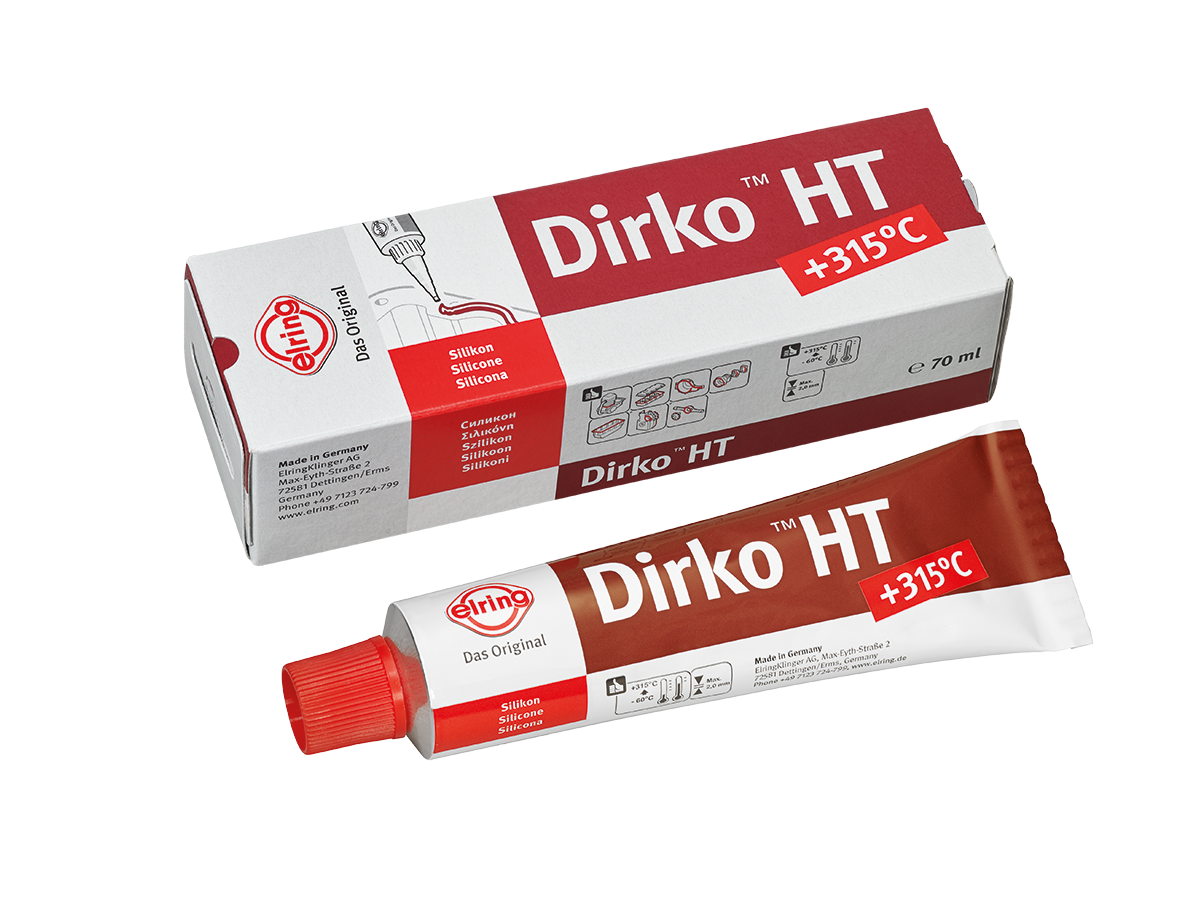THE gasket maker of Elring – das Original
ElringKlinger is known for its many years of experience and technical skill, which go hand in hand with over 140 years of production and trading of engine gaskets. In 1924, Elring was the first company in Europe to produce cylinder-head gaskets, at that time for the Opel Laubfrosch. The material of the time consisted of an asbestos plate and two cover layers of copper sheet. To this day, owners of these vehicles can count on the knowledge of the specialists in Dettingen/Erms. Already in 1950, the production of cylinder-head gaskets exceeded 500,000 units per year. Today, ElringKlinger produces around 42 million cylinder-head gaskets in all its plants worldwide.
Another product that dates back to the early days of ElringKlinger is the material first introduced in 1929 with the product name Abil, which is still produced today, but with improved qualities. Within this time span, the product has more than proven itself.
In the 1930s, the Elring portfolio was enriched by sealing compounds. Back then, a liquid sealant was required to provide additional sealing for the sealing materials available at the time. The Elring product had the name Curil, which is still well known today.
At the time, it was a hardening sealant that was resistant to petrol and diesel. There is now a successor to the previously popular sealant and the Elring sealant portfolio has increased with a number of new sealing compound products.
Best sold product line is the DirkoTM HT branded silicone. Even though this product category seems to be known by every full-time auto repair pro or dedicated DIYer, there are still doubts and questions around this product.
Elring DirkoTM HT, whether in color black, grey, red or beige, is based on one component and therefore it is ready to service. Second most important fact is that these silicones are designed for the automotive use and are therefore much more costly in comparison with silicon used for sanitary applications for example. This is most obvious looking at the temperature resistance. The DirkoTM shows a resistance of up to 300 °C for permanent use and peak temperature resistance of 315 °C. Let us face this. There is no need for a higher temperature resistance in a car or around the engine. A professional car mechanic using his common sense would for sure agree. An even higher temperature resistance usually would mean cutting back on other important properties.
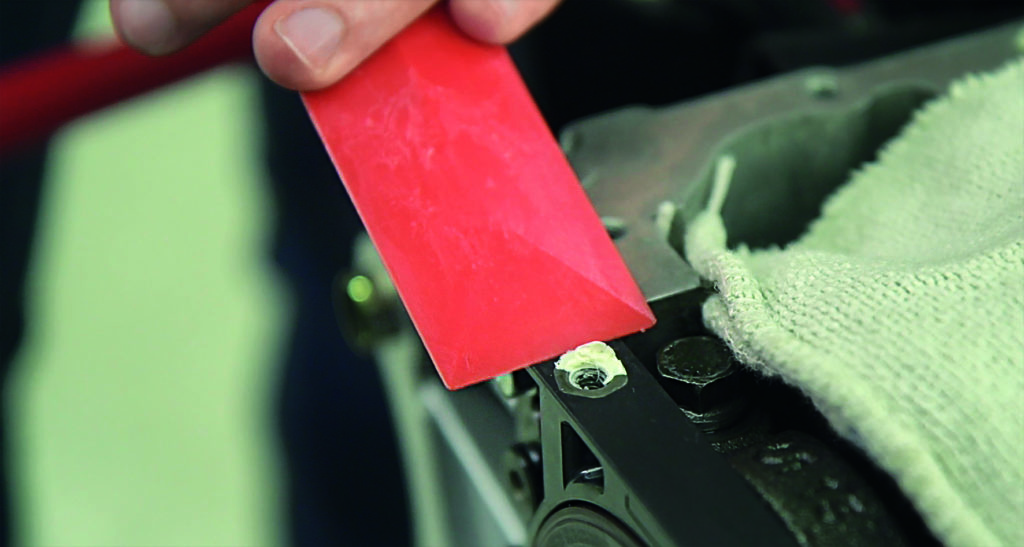
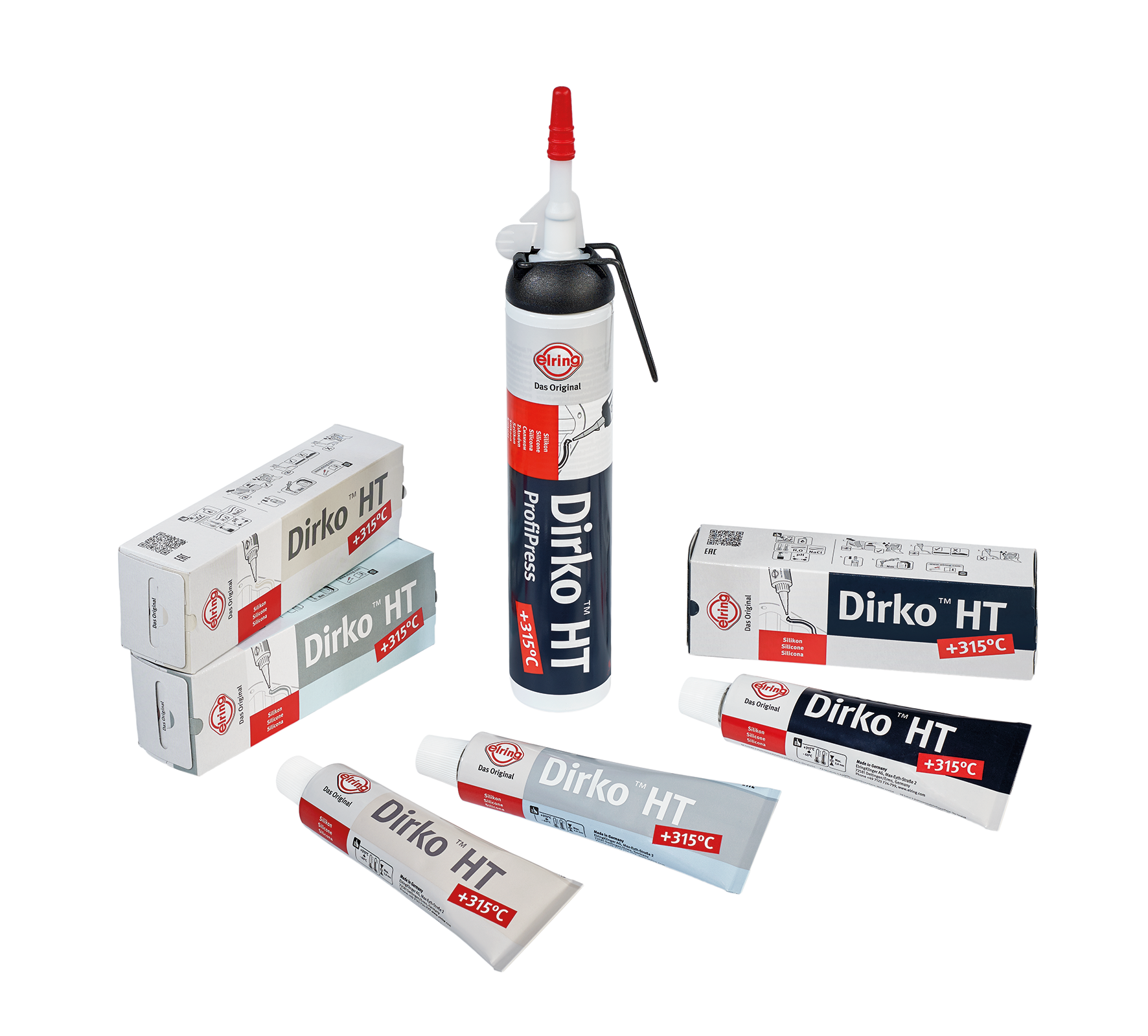
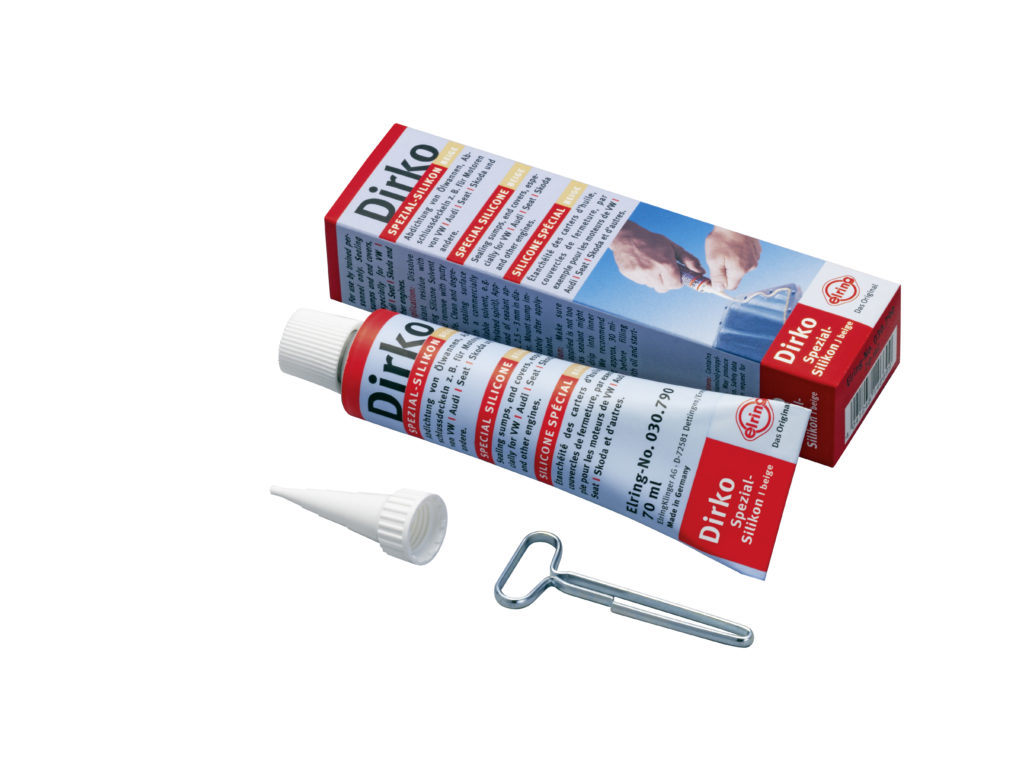
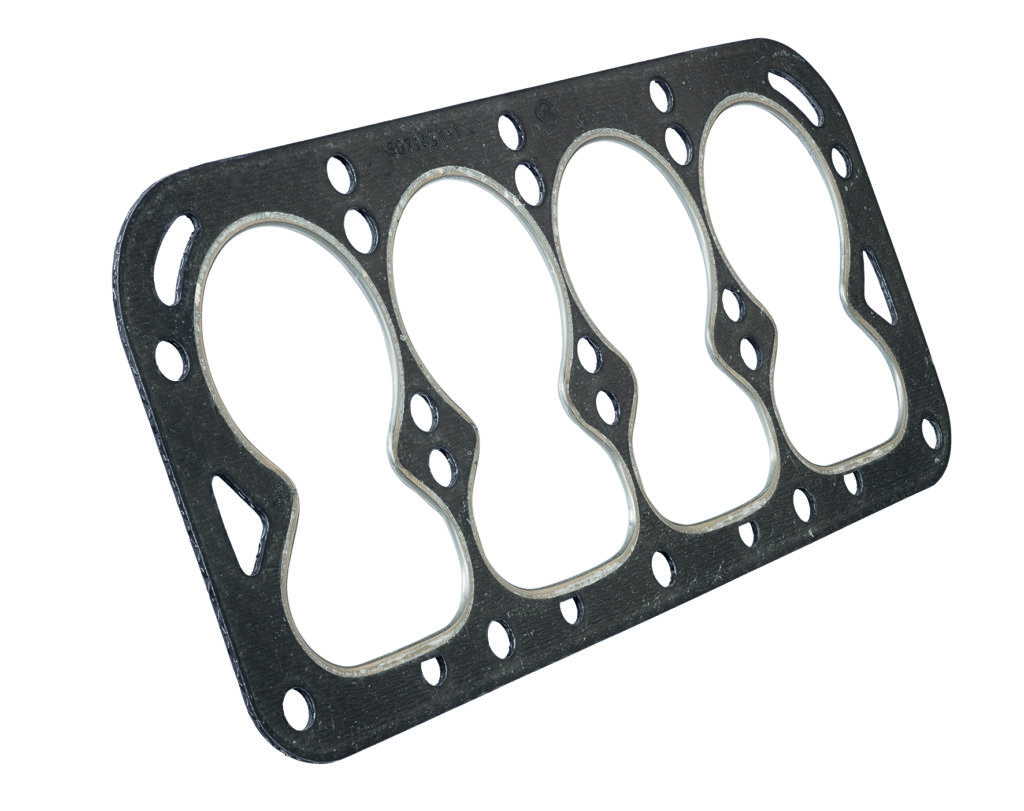
So what are the important properties:
Full chemical stability in contact with mineral engine oil, as well as synthetic oil even of the latest generation showing more additives than ever. Stability to any kind of grease, coolant, UV rays, detergents and salt water. Another quite important factor: It is not corrosive to aluminum and aluminum alloy which is the standard material for engine blocks and cylinder heads of today’s cars. On top of that it is permanently resilient once fully cured. Many questions and doubts center around the question:
Where can I apply silicones and how?
The typical areas of application are stamped sheet metal covers such as timing gear covers, oil pans on motor and automatic transmissions. But also housings and covers for water and oil pumps, differential housing and any flange connections. It might also be used at gasket intersections for example metal elastomer versions of front cover gaskets. It is important to consider, that the maximum dimension of the sealing gap stands at 2,0 mm.
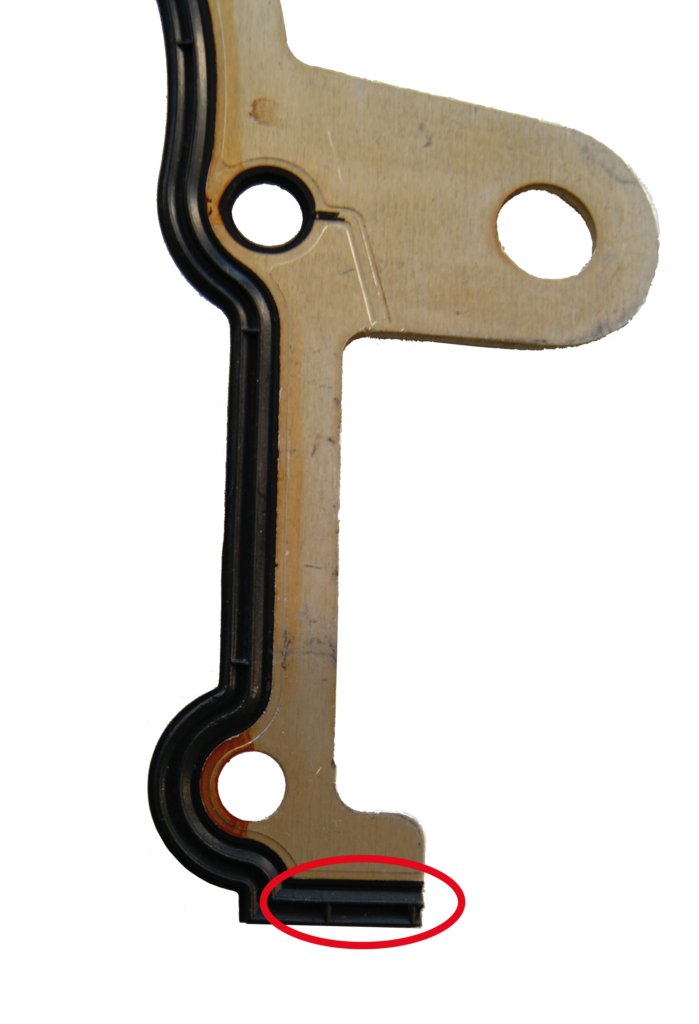
How is DirkoTM gasket maker applied?
First of all there is no way ducking out of cleaning the surface. It is no secret that cleaning surfaces covered with silicone stripes is no fun. Nevertheless it is mandatory to scrub all old silicone and have the surfaces look like new. Take care and do not produce scratches while using a sharp scraper. A plastic scraper is the choice.
Also important is to understand the chemical reaction behind the curing process. Typical silicone starts curing once exposed to oxygen. The reacting time then depends on the level of humidity. The lower the humidity the longer the curing time. Same with temperature. The higher the temperature the faster the curing time. At 23 °C and 50% humidity the important skin-forming time is around 10 minutes. This is a very good and useful estimation for the daily work. Now everybody understands the abbreviation of RTV: Room temperature vulcanized. Curing of silicone in mm and time at 23 °C and 50% relative humidity
There are practically two ways on how to apply DirkoTM HT gasket maker.
One is the so called wet application. The silicone is placed only on one surface that should be sealed and the counterpart of it is mounted instantly. Screws are tightened according to the manufacturers specification.
In case there is the chance that the silicone will be squeezed out of the sealing gap, it is best to wait until there is a perceptible skin on the paste. In case time does not matter, a good alternative is to mount the parts wet, put the screws in place, hand tighten them and wait until the silicone is fully vulcanized. However that might take some hours. After that tighten the screws according to the manufacturers specification.
Last but not least, DirkoTM can be used as a solid gasket by itself. Apply the paste on one of the surfaces, let it completely cross link so that it can form and look like a prefabricated elastomer gasket. Then assemble the parts.
Before starting to apply silicone it is wise to think about the thickness of the final sealing bead. Then cut the nozzle. Elring recommends a cut in a shape like a V. This allows for a more precise work. Screw pass-throughs are passed on the inner side of an oil pan for example.
Generally waiting for three hours is sufficient to get the engine started again. Even though it requires a maximum of 24 hours for a 100% curing.
Important is that very tiny and quite thin sealing gaps should be sealed with caution, simply because there is a chance that the silicone will be squeezed out and that would automatically lead to a leakage. Either short term or in the longer run.
Another possibility is to apply DirkoTM is from the outside of any housing or any place that is leaking. Again important is to have the contact surfaces perfect clean and depending on the total thickness of the applied silicone to allow enough time for curing.
So which DirkoTM shall be applied? It is up to the user, which color he likes most. OE manufactures like to differentiate themselves, so there are different colors available. You get them in the best quality from Elring – Das Original.
